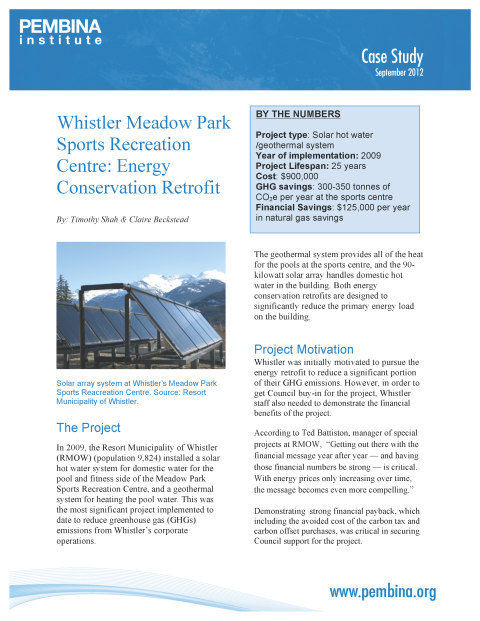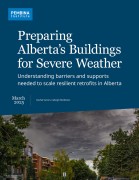In British Columbia, projects like district energy units, solar hot water systems and energy conservation retrofits are popping up across the province, but the real driving force behind such motivated action has remained unclear.
The purpose of this research was to examine a selection of 12 B.C. local government infrastructure projects that reduce greenhouse gas emissions to discover why communities are implementing them. This qualitative research was designed to assess if policies such as the Climate Action Charter, the Climate Action Revenue Incentive Program and the carbon tax are spurring climate action and project implementation at the local level.
The following six case studies profile communities where provincial policies had a positive influence on the development of emissions reductions projects:
- Dawson Creek: Solar Hot Water System Project at City Hall
- Corporation of Delta: Sungod Recreation Centre Energy Conservation Retrofit
- City of Fort St. John: Passivhaus
- Township of Langley: Geoexchange heating system
- Saanich Peninsula: Wastewater Heat Recovery
- Whistler Meadow Park Sports Recreation Centre: Energy Conservation Retrofit








